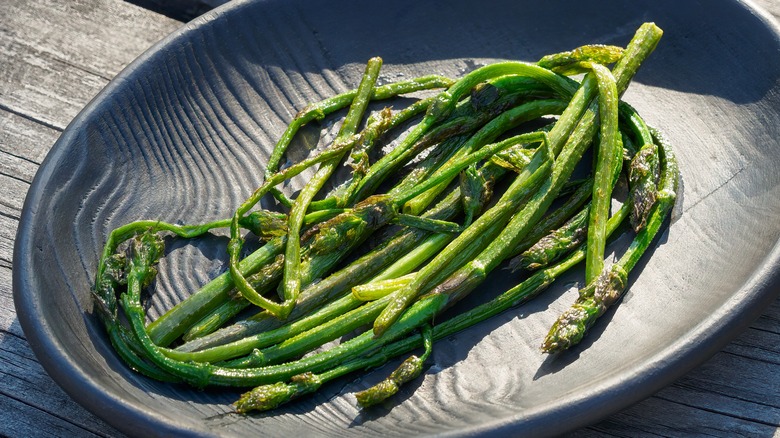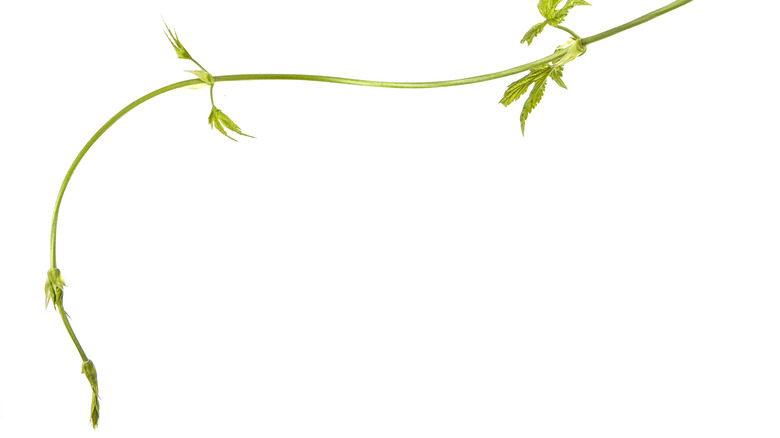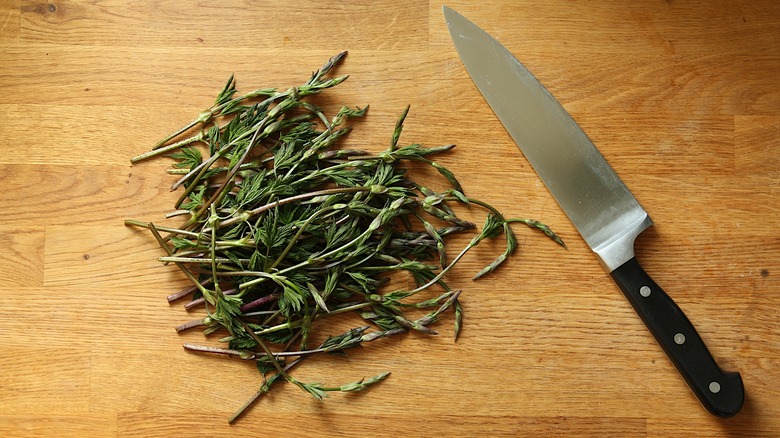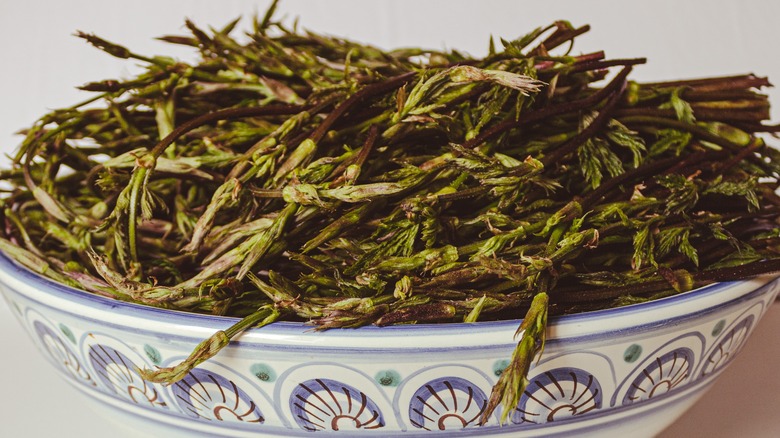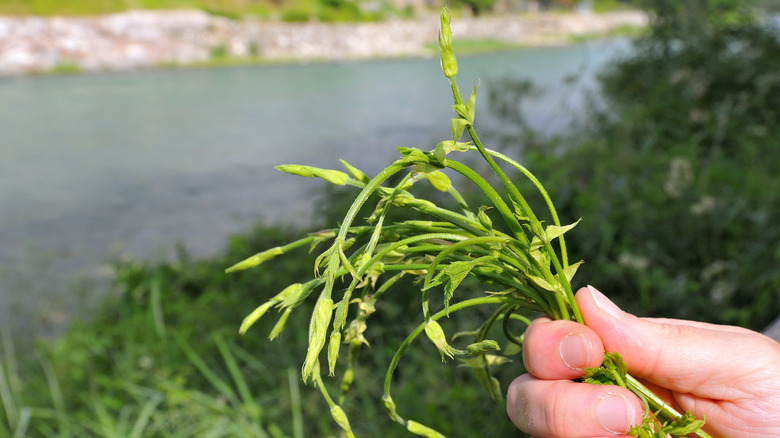One Of The Most Expensive Vegetables Is Pricey For Good Reason
When pricey foods come to mind, it's mainly dominated by animal products — caviar, high-end steaks, oysters, and the like. Yet, in addition to truffles, there is another lesser-known vegetable that scores incredibly high price tags — hop shoots.
Appearing spontaneously on hop vines, these small green and white sprouts are a pain to collect, transport, and keep fresh. Sold for as much as a thousand dollars a kilogram, they're also elusive, only available during a short harvesting season. Yet they're incredibly earthy and nutty, with a pleasant texture, which makes them worth the price. Plus, there are other ways to obtain them without the steep cost, like foraging or growing your own. With simple preparation, they'll add a delicious vegetable component to any meal — and one that's packed with health benefits, too. Plus, a pan full of them will certainly feel like an occasion. So let's dive into what these delicious vegetables are all about.
What are hop shoots?
These pricey greens grow at the end of hop plants. They're small offshoots that arise in spots where the hop cones used for beer production don't emerge. Their lofty price is due to several factors — their growth is very sporadic, they're small in size, and it's difficult to gather them in large volumes. Additionally, hop shoots don't store well, which means a transported batch needs to be as fresh as possible from picking to serving.
Raw hop shoots don't taste great — they have a bitter, astringent mouth feel that's unpalatable. However, once cooked, their magical qualities really shine. Their flavor has the earthiness of kale, combined with a nutty depth. Some call them hop asparagus due to their similarity to the stalky vegetables. And in accordance with their plant of origin, they do have a slightly beer-like hoppy note. Such factors make them delectable items worth cooking with — let's dive into how to use them in the kitchen.
How to cook with hop shoots
Like asparagus, the bottom of hop shoots tends to get tough and fibrous. Especially when hop shoots are getting older, feel for the lower section with a denser consistency and snip off the bottom. Next, make sure to rinse the greens — as a foraged vegetable, they tend to pick up more dirt.
When it comes to cooking hop shoots, keep their preparation simple, with only a few additional seasonings. Their delicate flavor is easily overridden by bold flavors, making it an easy ingredient to overwhelm. Consider simply sauteeing them in butter with some salt and lemon juice. Once sizzling on the heat, it'll only take a minute for them to reach completion. Serve on their own or with an accompaniment like potatoes, perhaps a simple pan-fried fish, or roasted chicken. Toss them into an omelet, or combine them with cheese for a salad. Consider substituting into dishes calling for asparagus for a broad range of applications. In Belgium, a prominent hop-growing nation, the plant is traditionally served with a poached egg and doused in a cream sauce. If the shoots appear stale, poach them for around ten to fifteen minutes to soften, and then finish on the pan.
Nutrition of hop shoots
Despite their small size, hop shoots pack in a substantial dose of health benefits. Like hops, which have demonstrated promising remedial qualities, hop shoots also boast some of these medicinal bonuses. The greens contain compounds Lupulin and Xanthohumol, both of which have sedating effects and anti-carcinogenic qualities. Additionally, hop shoots contain a compound called hopein, which has a structure similar to the female hormone estrogen. Consuming hop shoots has shown aid in repleting levels without hormonal replacement therapy, notes Women Fitness.
Additionally, cooking with hop shoots aids a nutritionally balanced diet. According to research published in "Agronomy," the vegetable is low in fat but high in protein, with up to 30% of its dry matter the satiating compound. Hop shoots also contain a high percentage of fiber, a compound that aids in controlling blood sugar levels, satiation, and digestion, per Harvard. As a result, a serving of hop shoots makes a difference in the satiation feel of a meal.
Where to buy and how to store hop shoots
As such a premium ingredient, hop shoots aren't the easiest to come by. Initiate a search at local farmer's markets, especially if there's a hop-growing region in the vicinity. The hop shoots only appear seasonally, from around February to early April, so it'll only be possible to find the plant during these spring months. They're also sometimes possible to find online.
Another option is foraging for the plant — which will alleviate the steep price. In areas where hops grow wild, it's possible to spot the small sprouts along vines! Another option is to grow your own hops, or inquire at a local hop farm. Oftentimes, commercial growers will allow you to keep the shoots in exchange for pruning their plants!
Once acquired, hop shoots spoil quickly. Keep them wrapped in a moist paper towel in the fridge. In a closed bag, they'll store for a week in such a state. However, as such a pricey plant, it's not worth the risks — integrate them as a vibrant addition to a dish as quickly as possible.
